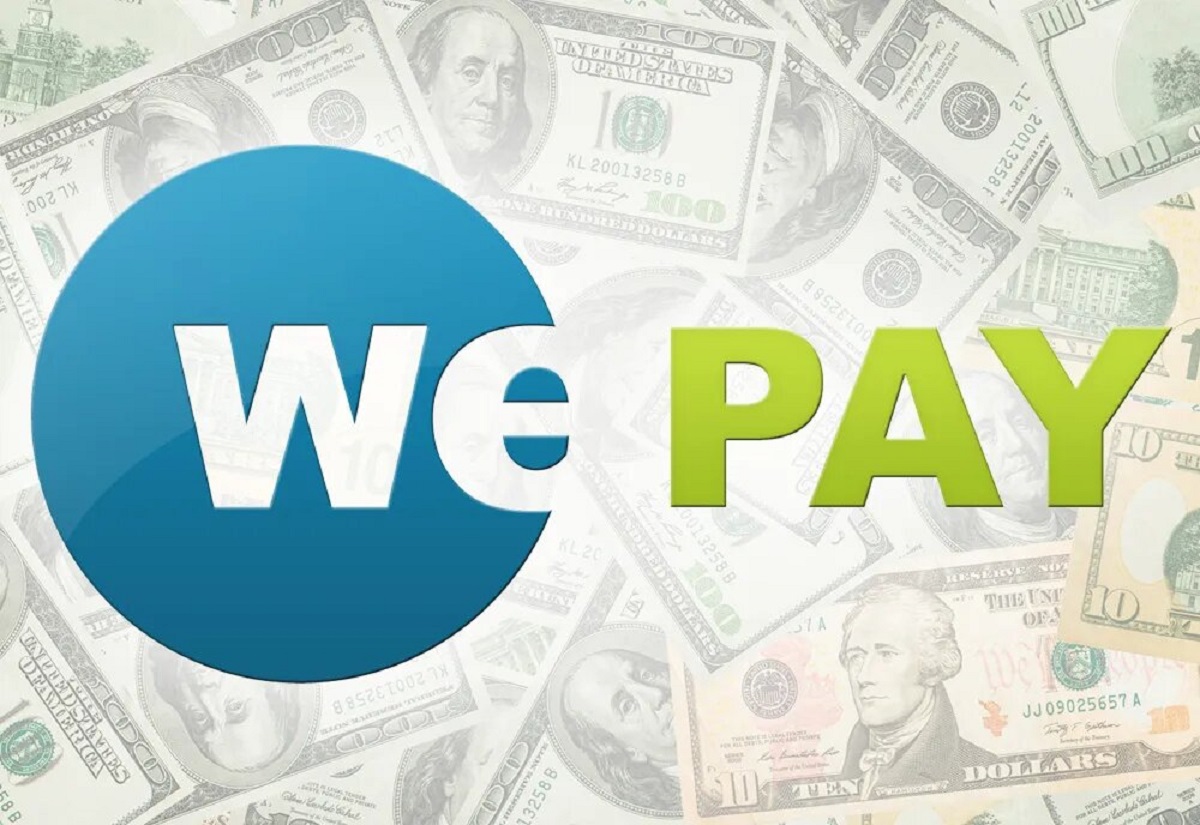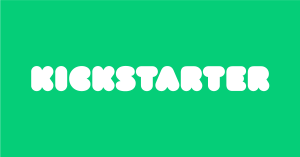Introduction
Welcome to the world of crowdfunding! Whether you have a passion project, a startup idea, or a charitable cause, crowdfunding can be a game-changer in helping you turn your dreams into reality. Crowdfunding is a form of fundraising that allows individuals and organizations to raise money from a large number of people, typically through online platforms.
In this article, we will guide you through the process of creating a crowdfunding account, from choosing the right platform to promoting your campaign and engaging with your backers. By following these steps, you will be well on your way to running a successful crowdfunding campaign.
Before we dive into the details, it’s important to understand the benefits of crowdfunding. One of the main advantages is that it provides access to a global network of potential backers who are interested in supporting innovative ideas and projects. Crowdfunding also allows you to validate your concept and gather valuable feedback from early adopters.
Additionally, crowdfunding provides an opportunity to build a community around your project. By involving backers in your journey, you can create a sense of ownership and establish long-term relationships with supporters who can become brand advocates.
Now, let’s get started on creating your crowdfunding account!
Step 1: Choose a Crowdfunding Platform
Choosing the right crowdfunding platform is crucial for the success of your campaign. There are several popular platforms available, each with its own set of features and audience. Here are a few key factors to consider when selecting a platform:
- Type of Project: Some crowdfunding platforms specialize in specific types of projects, such as creative endeavors, technology startups, or charitable causes. Determine which platform aligns best with your project’s goals and target audience.
- Fees and Pricing: Different crowdfunding platforms have varying fee structures, including platform fees and payment processing fees. Compare the costs associated with each platform and consider the value they provide.
- Platform Reach: The size and reach of the platform’s user base can greatly impact your campaign’s visibility. Look for platforms with a large and active community of backers who may be interested in your project.
- Platform Reputation: Research the reputation and track record of the crowdfunding platforms you’re considering. Look for successful campaigns in your industry to gauge the platform’s effectiveness.
- Additional Features: Some platforms offer additional features such as built-in social media integration, marketing tools, or analytics. Assess whether these features are important for your campaign strategy.
Popular crowdfunding platforms include Kickstarter, Indiegogo, GoFundMe, and Patreon. Explore each platform’s website, read reviews, and study their guidelines and policies to make an informed decision.
Remember, choosing the right crowdfunding platform is a critical step in setting up your campaign. Take the time to consider your project’s needs and find the platform that best aligns with your goals and target audience.
Step 2: Research and Set a Funding Goal
Before launching your crowdfunding campaign, it’s important to research and set a realistic funding goal. Your funding goal represents the amount of money you need to bring your project to life or achieve your desired outcome. Here’s how you can approach this crucial step:
1. Identify Project Costs: Take the time to meticulously calculate all the costs associated with your project. This includes production costs, marketing expenses, shipping fees, and any other related expenses. Be comprehensive and factor in unforeseen circumstances to ensure your funding goal covers all bases.
2. Consider Platform Fees: Keep in mind that crowdfunding platforms typically charge a fee for hosting your campaign. Factor these fees into your funding goal to ensure you will receive the necessary funds after deducting the platform’s cut.
3. Set a Realistic Target: Your funding goal should be ambitious yet attainable. Setting an unattainable goal can deter potential backers and harm your campaign’s credibility. Conduct market research, analyze similar projects, and set a realistic target that aligns with the scope and scale of your project.
4. Break Down the Funding Goal: Consider breaking down your funding goal into specific milestones or funding tiers. This gives backers a better understanding of how their contributions will be utilized and allows you to offer different reward levels based on the amount pledged.
5. Create a Sense of Urgency: Setting a timeframe for your campaign creates a sense of urgency and motivates potential backers to take action. Determine the duration of your campaign based on your project’s needs and the platform’s recommendations.
Remember, transparency and accuracy are key when setting your funding goal. By conducting thorough research, considering all expenses, and setting a realistic target, you increase your chances of reaching your funding goal and successfully bringing your project to life.
Step 3: Craft an Effective Campaign Description and Story
An effective campaign description and story are essential for capturing the attention and interest of potential backers. Your campaign should convey the purpose, uniqueness, and impact of your project in a compelling way. Here’s how you can craft a captivating campaign description:
1. Create a Hook: Start your campaign description with a captivating hook that grabs the reader’s attention. This can be a powerful statement, a thought-provoking question, or a compelling statistic related to your project.
2. Tell Your Story: Share the story behind your project, including its origins, inspiration, and the problem it aims to solve. Make it personal and relatable, allowing potential backers to connect with your project on an emotional level.
3. Highlight the Benefits and Impact: Clearly articulate the benefits and impact of your project. Explain how it will make a difference in people’s lives, society, or the industry. Use concrete examples, testimonials, or case studies to demonstrate the value your project offers.
4. Showcase Your Expertise: Build trust and credibility by showcasing your expertise, experience, or achievements related to the project. Highlight any relevant qualifications, previous successes, or partnerships that lend credibility to your campaign.
5. Use Visuals: Incorporate high-quality images, videos, and graphics that visually enhance your campaign. Visuals can help potential backers visualize your project and create a stronger emotional connection.
6. Keep it Concise and Clear: While it’s important to provide sufficient information, avoid overwhelming potential backers with lengthy paragraphs. Use clear and concise language, break up the text into smaller sections, and use bullet points to highlight key information.
7. Include a Call to Action: Clearly state what you want potential backers to do and how they can support your project. Provide a clear call to action, such as pledging, sharing the campaign, or subscribing to updates.
Remember, your campaign description should be persuasive, authentic, and informative. By effectively telling your project’s story and showcasing its impact, you increase the likelihood of capturing the attention and support of potential backers.
Step 4: Create a Compelling Campaign Video
A compelling campaign video is an excellent way to engage potential backers and effectively convey your project’s message. A well-crafted video can capture attention, generate excitement, and increase the chances of success for your crowdfunding campaign. Here are some essential tips to create a compelling campaign video:
1. Keep it Short and Engaging: Aim for a video length of around 2 to 3 minutes. Grab the viewer’s attention from the start and maintain their interest throughout the video. Keep the pacing brisk, use captivating visuals, and avoid unnecessary information.
2. Start with an Attention-Grabbing Hook: Begin your video with a strong hook that immediately draws viewers in. This could be an intriguing question, an emotional moment, or an impactful visual that captures curiosity.
3. Tell a Story: Tell the story behind your project in a way that engages the viewers emotionally. Take them on a journey, highlighting the problem your project solves and the impact it can have. Incorporate personal anecdotes or testimonials to make it relatable.
4. Showcase the Project: Clearly and visually demonstrate your project in action. Showcase prototypes, designs, or previous work to provide a tangible representation of what you’re creating. This helps potential backers understand your project’s feasibility and potential.
5. Include the Team: Introduce the people behind the project to establish credibility and trust. Share brief profiles of key team members and their relevant expertise. This helps potential backers see the passion, dedication, and expertise behind the project.
6. Communicate the Rewards: Clearly explain the rewards and incentives backers can receive for supporting your project. Show different reward tiers and highlight the value of each tier to encourage backers to contribute more.
7. Keep it Authentic: Be genuine and authentic in your video. People connect with real stories and genuine passion. Avoid being too promotional or overly rehearsed.
8. Use High-Quality Production: Invest in good production values to ensure your video looks and sounds professional. Use good lighting, clear audio, and high-resolution visuals. Poor video quality can undermine the credibility of your project.
Remember, your campaign video is an opportunity to make a strong impression and generate excitement about your project. By following these tips and creating a compelling and visually appealing video, you can increase the chances of grabbing the attention and support of potential backers.
Step 5: Set Rewards and Incentives for Backers
One of the key factors that can drive the success of your crowdfunding campaign is the rewards and incentives you offer to backers. Rewards not only encourage people to support your project financially but also serve as a way to show your appreciation for their support. Here are some tips to help you set enticing rewards and incentives for your backers:
1. Create Reward Tiers: Offer different levels of rewards based on the amount contributed. This allows backers to choose a tier that aligns with their budget and desired level of involvement. Make sure the rewards are appealing and provide value to the backers.
2. Offer Exclusivity: Consider offering exclusive rewards or early access to your project or product. This gives backers a sense of being part of an exclusive group and provides an added incentive to support your campaign.
3. Personalize Rewards: If possible, personalize rewards to make them more meaningful. This can include handwritten thank-you notes, signed copies, or personalized messages. Adding a personal touch shows that you value your backers’ support.
4. Consider Limited Editions: Create limited edition versions of your product or unique merchandise that are only available through your crowdfunding campaign. This adds a sense of exclusivity and rarity, making the rewards more enticing for backers.
5. Include Backer Involvement: Offer rewards that involve backers in the creative process or give them a chance to contribute ideas. This can include naming characters, suggesting features, or participating in beta testing. Backer involvement fosters a sense of co-creation and strengthens their connection to your project.
6. Keep Fulfillment Feasible: Ensure that the rewards you offer are realistic and feasible to fulfill within the timeframe and budget of your campaign. Consider production costs, shipping logistics, and any other factors that may impact the delivery of rewards.
7. Communicate the Value: Clearly communicate the value and benefits of each reward level. Explain why each reward is unique, desirable, and worth the backer’s investment. Highlight the exclusivity, quality, or additional perks associated with each reward.
Remember, setting appealing rewards and incentives is crucial to attract and motivate backers to support your campaign. By offering meaningful, personalized, and exclusive rewards, you can entice backers to contribute to your project and increase the overall success of your crowdfunding campaign.
Step 6: Promote Your Campaign on Social Media and Other Channels
Promoting your crowdfunding campaign is essential to gaining visibility and attracting backers. In today’s digital age, social media and other online channels play a crucial role in reaching a wide audience. Here are some effective strategies for promoting your campaign:
1. Utilize Social Media: Create dedicated social media pages for your campaign on platforms like Facebook, Twitter, and Instagram. Share engaging content, updates, and visually appealing images or videos related to your project. Leverage relevant hashtags and engage with your audience regularly.
2. Organize a Pre-Launch Campaign: Build anticipation and excitement by conducting a pre-launch campaign before your official launch. Tease your project, share sneak peeks, and encourage people to subscribe for updates. This helps create a buzz and gathers a pool of potential backers before your campaign goes live.
3. Reach Out to Influencers: Identify influencers or bloggers in your industry who may be interested in your project. Reach out to them and offer collaboration opportunities, such as product reviews, interviews, or guest blog posts. Their endorsement can greatly expand the reach of your campaign.
4. Engage with Online Communities: Participate in relevant online forums, communities, and discussion groups related to your project. Share valuable insights, answer questions, and build relationships with community members. Avoid spamming, but genuinely contribute to the conversations and establish yourself as an authority.
5. Collaborate with Complementary Projects: Find other crowdfunding campaigns or projects that complement yours and explore collaboration opportunities. Cross-promote each other’s campaigns through social media shoutouts, guest blog posts, or joint giveaways. This helps you tap into each other’s audience and gain additional visibility.
6. Utilize Email Marketing: Build an email list of interested individuals and potential backers before launching your campaign. Send regular updates, exclusive content, and reminders to engage and incentivize your subscribers to support your campaign. Personalize your emails and include compelling visuals and clear calls to action.
7. Leverage PR Opportunities: Seek media coverage for your project by reaching out to relevant journalists, bloggers, or podcasts. Craft a compelling press release, share your story, and highlight the unique aspects of your project. Be prepared for interviews and media inquiries to maximize exposure.
Remember, consistent and strategic promotion is key to the success of your crowdfunding campaign. By utilizing social media, reaching out to influencers, engaging with online communities, leveraging email marketing, and seeking PR opportunities, you can effectively spread the word about your project and attract a wider audience of potential backers.
Step 7: Engage with Your Backers and Keep Them Updated
Engaging with your backers and keeping them informed throughout your crowdfunding campaign is crucial for maintaining their interest and support. By actively engaging with your backers, you foster a sense of community and build trust. Here are some strategies to effectively engage with your backers:
1. Respond promptly: Be responsive to messages, comments, and inquiries from your backers. Show that you value their support by providing timely and helpful responses. This demonstrates your commitment to open communication and encourages backer engagement.
2. Provide regular updates: Keep your backers informed about the progress of your project through regular updates. Whether it’s sharing milestones, production updates, or exciting developments, updates help backers feel involved in the journey. Use a mix of text, images, and videos to make the updates engaging and informative.
3. Show appreciation: Regularly express gratitude to your backers for their support. Offer thanks publicly through social media, update posts, or campaign updates. You can also consider sending personalized thank-you messages or including backer appreciation in your campaign video.
4. Host live Q&A sessions: Organize live question-and-answer sessions on social media platforms or through video streams. This allows backers to ask questions, share feedback, and interact directly with you. It also provides an opportunity to address concerns or clarify any uncertainties.
5. Incorporate backer feedback: Actively listen to the feedback and suggestions from your backers. Incorporate valuable ideas and suggestions whenever possible and communicate these changes to your backers. This not only shows that you value their input but also helps create a sense of ownership and involvement in the project.
6. Offer exclusive perks: Provide special perks or bonuses exclusively for your backers. This could include additional rewards, early access to updates, or exclusive behind-the-scenes content. Exclusive perks make backers feel valued and create an incentive for continued engagement.
7. Encourage user-generated content: Spark creativity and engagement by encouraging backers to share their experiences with your project. This could be through testimonials, unboxing videos, or user photos. Share and showcase this user-generated content to foster a sense of community and encourage others to get involved.
Remember, engaging with your backers goes beyond the duration of your crowdfunding campaign. Even after the campaign ends, it’s important to continue providing updates and involving backers in the project’s progress. By nurturing these relationships, you can turn backers into long-term supporters and advocates for your project.
Step 8: Monitor and Adjust Your Campaign Strategy
Monitoring and adjusting your campaign strategy throughout the crowdfunding process is crucial for maximizing its effectiveness and making necessary improvements. By closely tracking your campaign’s performance and making data-driven adjustments, you can increase your chances of success. Here’s what you need to do:
1. Analyze Campaign Metrics: Regularly monitor key campaign metrics such as funding progress, conversion rates, traffic sources, and backer engagement. This information provides insights into the effectiveness of your campaign strategy and helps identify areas for improvement.
2. Track Backer Feedback: Pay attention to feedback from your backers and potential supporters. Take note of comments, questions, and suggestions, and use this feedback to adapt your campaign strategy or address any concerns that arise.
3. Identify High-Impact Channels: Keep an eye on the channels that are driving the most traffic and conversions to your campaign. Spend more time and resources on these high-impact channels to maximize your campaign’s reach and effectiveness.
4. Experiment with Different Tactics: Don’t be afraid to experiment with different marketing and promotional tactics. Test different messaging, visuals, or advertising strategies to see what resonates best with your target audience. Continuously evaluate and refine your approach based on the results.
5. Stay Active in Promoting: Maintain an active presence on social media and other relevant platforms throughout your campaign. Regularly post updates, respond to comments, and engage with your audience. Keep the momentum going by consistently promoting your campaign to maintain interest and attract new backers.
6. Monitor Competitor Campaigns: Keep an eye on campaigns by your competitors or projects similar to yours. Pay attention to their approach, tactics, and engagement strategies. Learn from their successes and failures, and adapt your strategy accordingly.
7. Communicate Changes to Backers: If you make significant changes to your campaign strategy or reward tiers, communicate these changes to your backers. Be open and transparent about any adjustments and explain the reasons behind them. Keep your backers updated and involved in the decision-making process.
By regularly monitoring and adjusting your campaign strategy, you can optimize your approach, overcome obstacles, and increase your chances of achieving your funding goals. Be proactive, flexible, and open to adapting your strategy based on campaign data and feedback.
Step 9: Fulfill Your Promises and Deliver Rewards
Once your crowdfunding campaign reaches its funding goal, it’s crucial to fulfill your promises and deliver the rewards to your backers. Fulfillment is a critical step in maintaining the trust and satisfaction of your supporters. Here’s how you can ensure a smooth and successful fulfillment process:
1. Organize Backer Information: Keep a well-organized database of your backers’ information, including their names, contact details, reward selections, and shipping addresses. This ensures accurate and efficient delivery of rewards.
2. Communicate Timelines and Updates: Keep your backers informed of the fulfillment timeline and any updates related to the production, manufacturing, or shipping of your project. Transparency and regular communication go a long way in building trust and managing expectations.
3. Quality Check the Rewards: Before shipping out the rewards, conduct a thorough quality check to ensure they meet your standards. Verify that all items are in good condition and meet the specifications promised to your backers.
4. Package Rewards Securely: Use appropriate packaging materials to ensure the safe and secure delivery of rewards. Take into account the nature of the rewards and use protective measures to prevent damage during transit.
5. Provide Tracking Information: For rewards that require shipping, provide tracking information to your backers. This allows them to monitor the progress of their package and anticipate its arrival.
6. Handle Customer Service Inquiries Promptly: Be prepared to handle any customer service inquiries or issues that may arise during the fulfillment process. Respond promptly to backer concerns and address any problems in a professional and timely manner.
7. Show Appreciation: Include a personal note of appreciation or a small token of gratitude along with the rewards. This extra touch reinforces your appreciation for your backers’ support and enhances the overall experience.
8. Seek Feedback and Reviews: After the fulfillment process, encourage your backers to provide feedback and reviews on their experience. This helps build social proof and credibility for your project, which can benefit future endeavors.
Remember, delivering rewards to your backers is not just a transactional process. It’s an opportunity to reinforce the positive impression of your project and build lasting relationships. By ensuring a smooth and timely fulfillment process, you can enhance the satisfaction and loyalty of your backers.
Conclusion
Congratulations! You have reached the end of this guide on how to create a crowdfunding account. By following the nine steps outlined in this article, you have gained valuable insights into the key factors for running a successful crowdfunding campaign. Let’s recap what we have covered:
1. Choose a Crowdfunding Platform: Select the platform that best suits your project’s goals, target audience, and budget.
2. Research and Set a Funding Goal: Conduct thorough research to determine a realistic funding goal that covers your project’s costs and aligns with market expectations.
3. Craft an Effective Campaign Description and Story: Create a compelling campaign description that tells the story behind your project and engages potential backers.
4. Create a Compelling Campaign Video: Produce a high-quality, captivating video that showcases your project and connects with your audience on an emotional level.
5. Set Rewards and Incentives for Backers: Design enticing rewards and incentives to motivate backers to support your project at different contribution levels.
6. Promote Your Campaign on Social Media and Other Channels: Utilize social media, influencers, email marketing, and other promotional tactics to maximize the reach and visibility of your campaign.
7. Engage with Your Backers and Keep Them Updated: Maintain open communication, respond to inquiries, provide regular updates, and show appreciation to foster a sense of community and connection.
8. Monitor and Adjust Your Campaign Strategy: Analyze campaign metrics, track feedback, and make necessary adjustments to optimize your campaign’s performance.
9. Fulfill Your Promises and Deliver Rewards: Maintain transparency, deliver rewards on time, and provide excellent customer service to ensure the satisfaction of your backers.
By implementing these steps and putting effort into each aspect of the crowdfunding process, you can increase your likelihood of running a successful campaign and bringing your project to life.
Remember, a successful crowdfunding campaign requires dedication, perseverance, and effective execution of the strategies outlined in this guide. Keep learning, stay adaptable, and be responsive to the needs and expectations of your backers. With the right approach, your crowdfunding journey can be an exciting and rewarding experience.

























